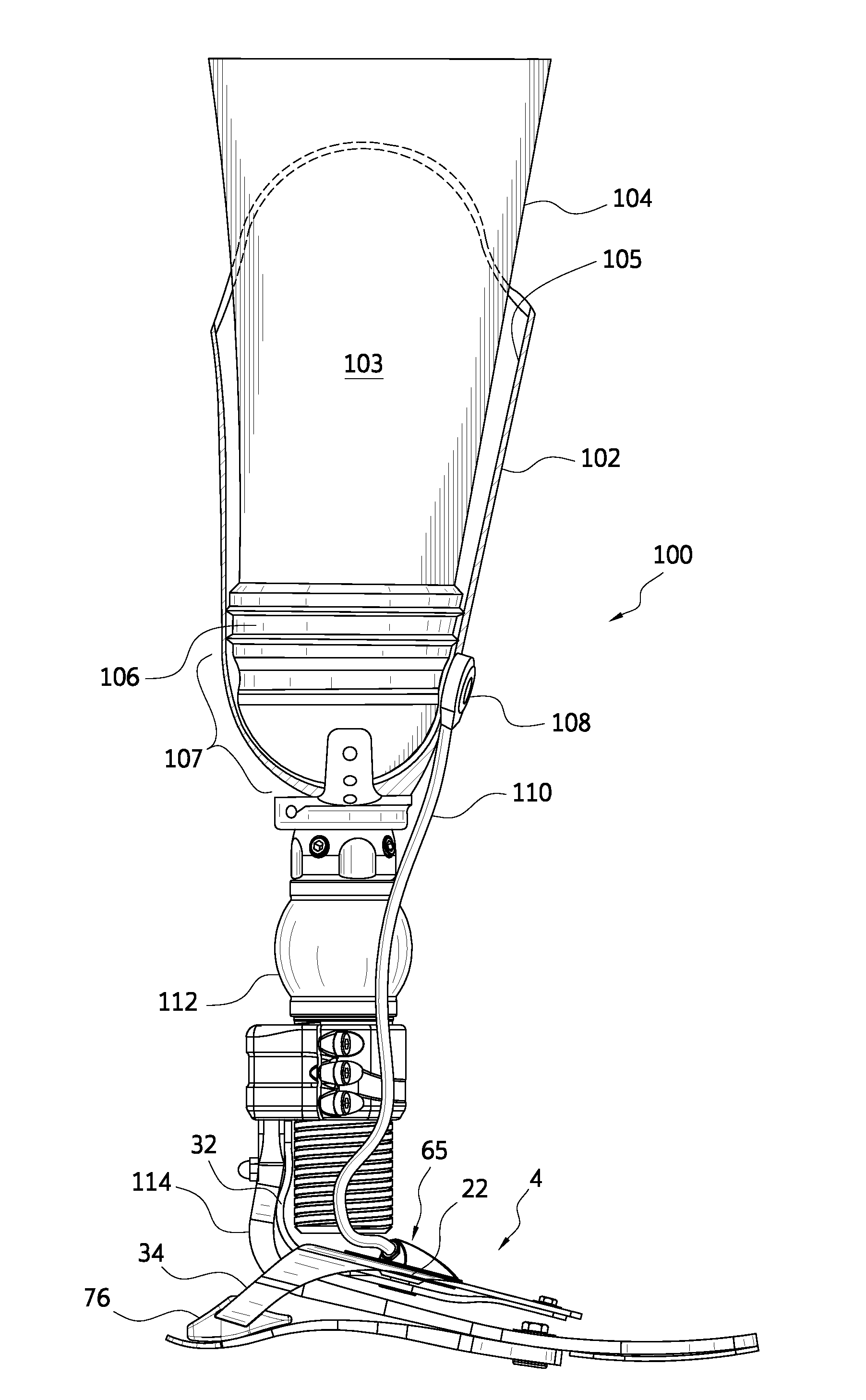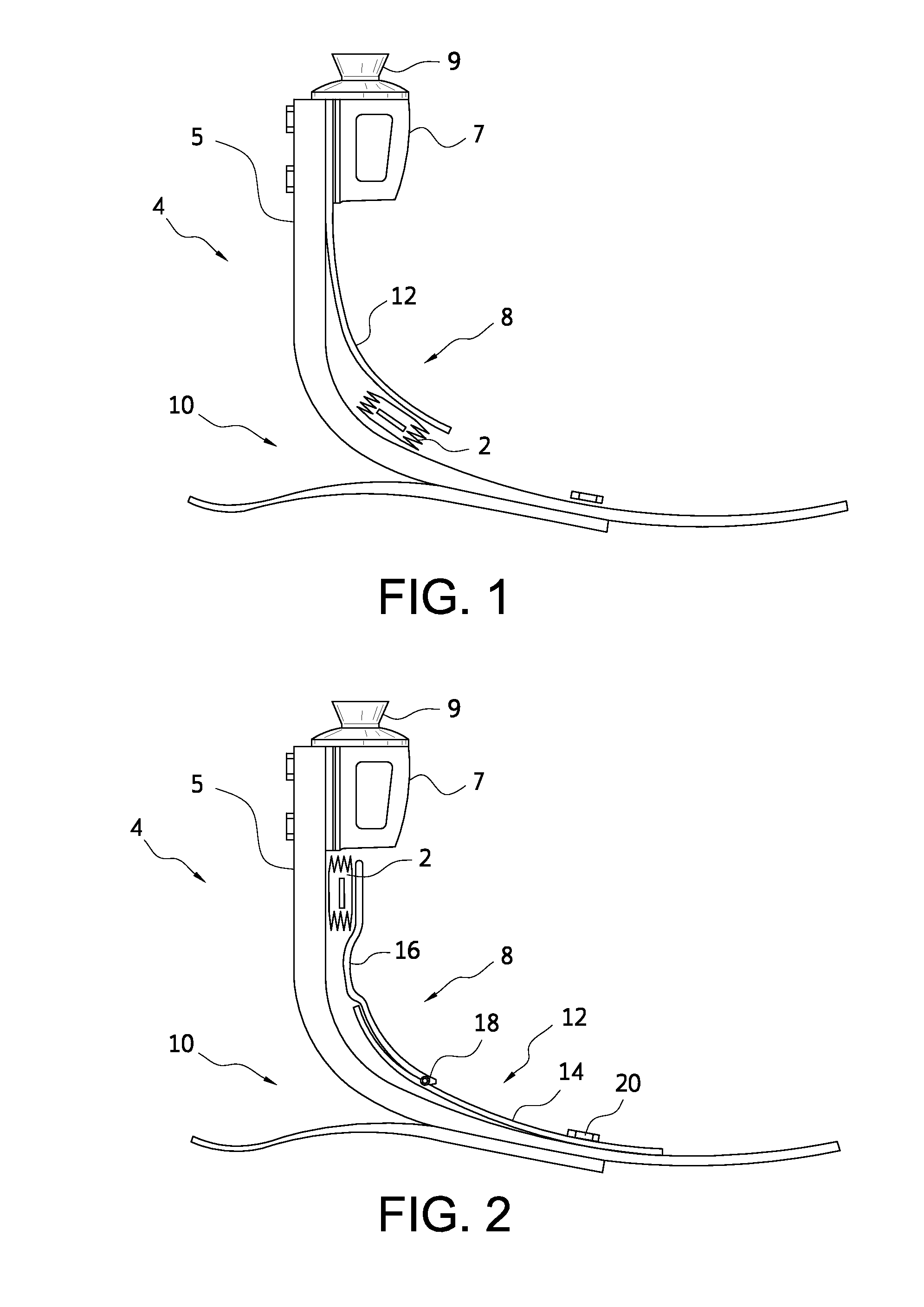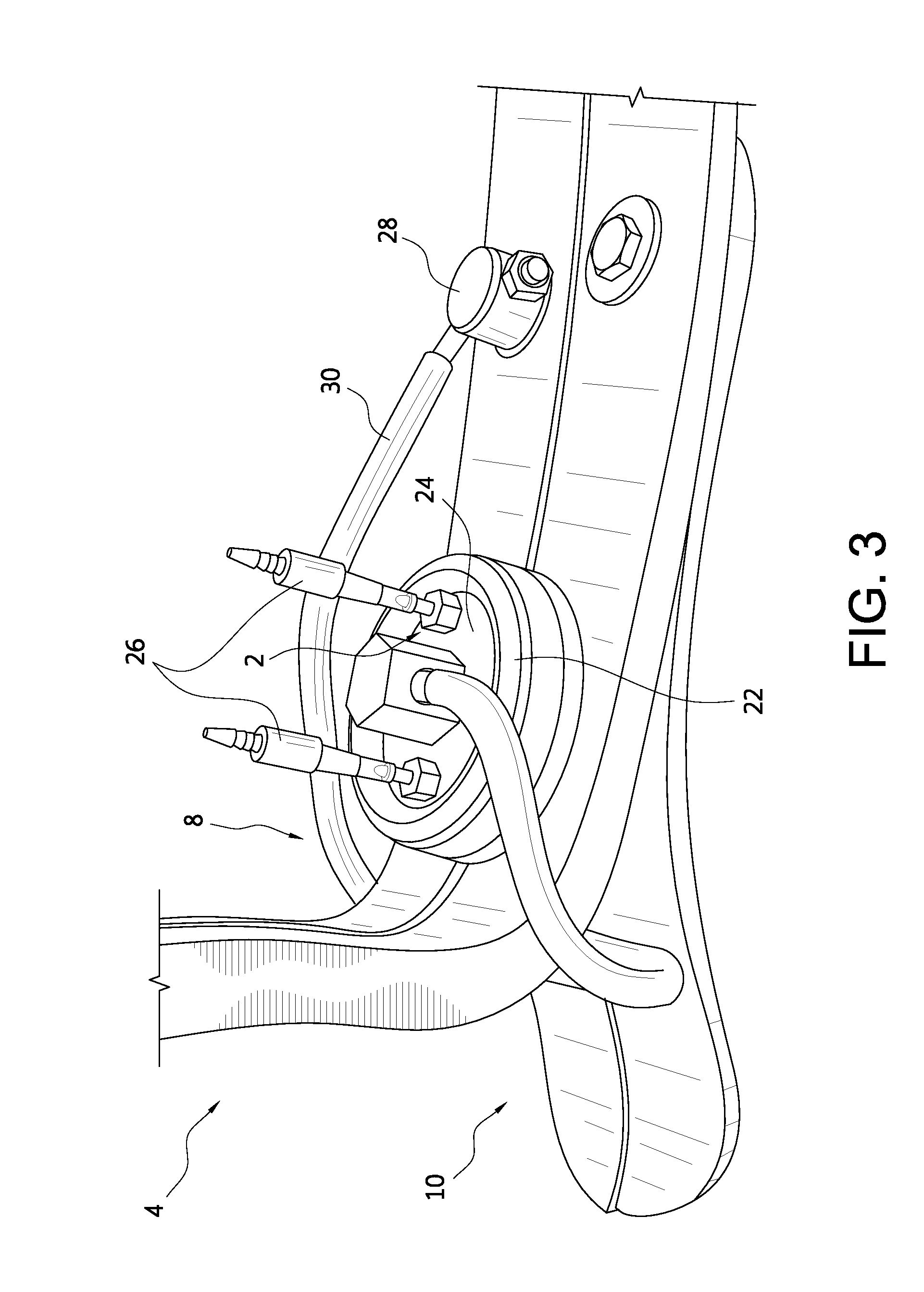Prosthetic device, system and method for increasing vacuum attachment
a technology of prosthetic devices and vacuum attachment, applied in the field of prosthetic devices, can solve the problems of vacuum formation, many known systems have a tendency to lose suction, and the inability to adapt to the volume change of the limb, and achieve the effect of less restriction of the range of motion, rapid and easy releas
- Summary
- Abstract
- Description
- Claims
- Application Information
AI Technical Summary
Benefits of technology
Problems solved by technology
Method used
Image
Examples
first embodiment
OF THE PROSTHETIC DEVICE
[0070]FIG. 1 shows a first embodiment of the prosthetic device comprising a pump mechanism 2 and a prosthetic foot 4. The pump mechanism 2 has two opposing walls and at least one side wall. The prosthetic foot 4 has an ankle area 8, a heel area 10, and a movable member 12 attached at one end to the prosthetic foot 4 and extending over the front of the prosthetic foot 4 leaving an unattached end. The attached end of the moveable member 12 may be pivoting or non-pivoting. The moveable member 12 generally follows the curvature of the front of the prosthetic foot 4 and a clearance between the moveable member 12 and the front of the prosthetic foot 4 gradually increases. The pump mechanism 2 is placed in the clearance between the movable member 12 and the front of the prosthetic foot 4 within the ankle area 8 near the unattached end of the moveable member 12. One side of the pump is attached to the member 12 and another side of the pump is attached to the prosthet...
second embodiment
OF THE PROSTHETIC DEVICE
[0076]FIG. 3 shows another embodiment of the prosthetic device comprising a vacuum pump mechanism 2 and a prosthetic foot 4. The vacuum pump mechanism 2 in this embodiment is a membrane-type pump comprising a flexible membrane 22 and a rigid wall 24. The flexible membrane 22 forms a seal with the rigid wall 24. In FIG. 3, this seal may be formed by having the flexible membrane 22 extend over and around the edges of the rigid wall 24 such that the rigid wall 24 fits within a recess formed by the edges of the flexible membrane 22. An airtight seal between the rigid wall 24 and the edges of the flexible membrane 22 may be formed using an adhesive.
[0077]A moveable member 30 is attached at one end to the prosthetic foot 4 in the midfoot area with a pivoting attachment 28, and the moveable member 30 wraps around the heel area 10 of the foot 4. The portion of the moveable member 30 located within the heel area 10 maintains contact with the heel portion of the foot 4...
third embodiment
OF THE PROSTHETIC DEVICE
[0081]FIG. 4 shows another embodiment of the prosthetic device having a prosthetic foot 4 and a membrane-type vacuum pump mechanism 2. The moveable member 30 in this embodiment is formed as a combination of two moveable plates 32, 34. The top plate 32 is connected to the rigid wall 24 and, in FIG. 4, is shown as extending through the rigid wall 24. The bottom plate 34 is connected to the flexible membrane 22 near the membrane's attachment point 40 to the prosthetic foot 4. The bottom plate 34 is also attached to the front of the prosthetic foot 4 in the shin area of the foot 4. The bottom plate 34 follows the curve of the foot 4 by having a substantially constant clearance between the bottom plate 34 and the foot 4. Near the midfoot and forefoot areas, the clearance between the bottom plate 34 and the foot 4 increases so the bottom plate 34 does not impede the gait of the user.
[0082]The top plate 32 is present between the ankle area and the midfoot area of th...
PUM
 Login to View More
Login to View More Abstract
Description
Claims
Application Information
 Login to View More
Login to View More - R&D
- Intellectual Property
- Life Sciences
- Materials
- Tech Scout
- Unparalleled Data Quality
- Higher Quality Content
- 60% Fewer Hallucinations
Browse by: Latest US Patents, China's latest patents, Technical Efficacy Thesaurus, Application Domain, Technology Topic, Popular Technical Reports.
© 2025 PatSnap. All rights reserved.Legal|Privacy policy|Modern Slavery Act Transparency Statement|Sitemap|About US| Contact US: help@patsnap.com



